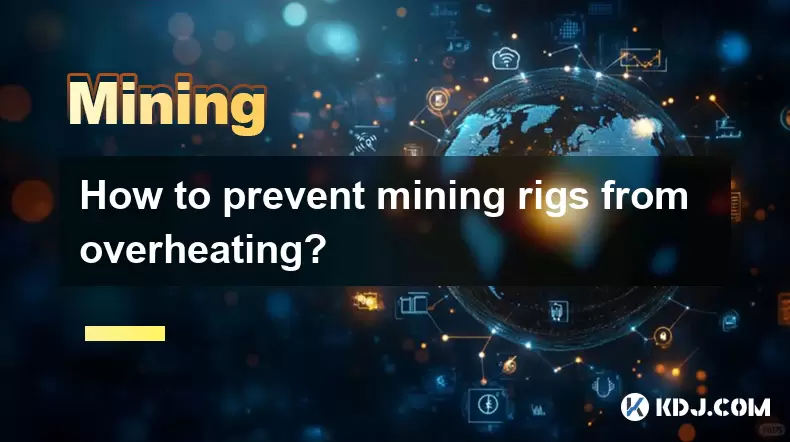-
 Bitcoin
Bitcoin $118,841.1054
1.02% -
 Ethereum
Ethereum $3,364.2689
7.44% -
 XRP
XRP $3.0337
3.93% -
 Tether USDt
Tether USDt $1.0004
0.04% -
 BNB
BNB $708.2059
2.49% -
 Solana
Solana $173.2385
5.74% -
 USDC
USDC $0.9999
-0.01% -
 Dogecoin
Dogecoin $0.2121
6.85% -
 TRON
TRON $0.3090
2.81% -
 Cardano
Cardano $0.7628
2.25% -
 Hyperliquid
Hyperliquid $46.8391
-2.08% -
 Stellar
Stellar $0.4537
0.15% -
 Sui
Sui $3.9529
-2.88% -
 Chainlink
Chainlink $16.6414
3.72% -
 Hedera
Hedera $0.2354
1.52% -
 Bitcoin Cash
Bitcoin Cash $499.1285
0.43% -
 Avalanche
Avalanche $22.6400
0.57% -
 Shiba Inu
Shiba Inu $0.0...01438
4.88% -
 UNUS SED LEO
UNUS SED LEO $8.8507
-0.64% -
 Toncoin
Toncoin $3.1498
2.35% -
 Litecoin
Litecoin $97.4954
1.21% -
 Polkadot
Polkadot $4.1541
1.50% -
 Monero
Monero $331.4406
-1.03% -
 Pepe
Pepe $0.0...01350
5.24% -
 Uniswap
Uniswap $8.9103
-5.01% -
 Bitget Token
Bitget Token $4.7540
4.51% -
 Dai
Dai $0.9999
-0.02% -
 Ethena USDe
Ethena USDe $1.0008
0.00% -
 Aave
Aave $322.3328
-1.63% -
 Bittensor
Bittensor $431.8026
-0.50%
How to prevent mining rigs from overheating?
To prevent mining rig overheating, ensure proper airflow, clean components regularly, and monitor GPU temperatures with tools like MSI Afterburner.
Jul 16, 2025 at 04:14 am

Understanding the Causes of Overheating in Mining Rigs
Overheating is one of the most common issues faced by cryptocurrency miners, especially those running mining rigs continuously. The primary reason for overheating lies in the intense computational workload that graphics processing units (GPUs) endure during mining operations. These components generate significant heat due to high power consumption and constant usage. Poor ventilation, dust accumulation, inadequate cooling systems, and overclocking are other contributing factors. Inadequate airflow within the mining case can lead to heat buildup, causing GPUs and other hardware components to exceed safe temperature thresholds.
Selecting the Right Case for Optimal Airflow
Choosing an appropriate mining case is crucial in preventing overheating. A well-designed mining rig case should allow for maximum airflow while accommodating multiple GPUs efficiently. Open-air frames are popular among miners because they provide better ventilation compared to enclosed cases. If using a closed case, ensure it has sufficient intake and exhaust fans. It’s also important to position the case in a location with good ambient airflow and away from heat sources. Avoid placing the rig near walls or corners where air circulation is limited.
- Ensure at least two case fans are installed—one for intake and one for exhaust.
- Use mesh filters to prevent dust buildup without restricting airflow.
- Consider adding a top-mounted fan if your case allows for additional cooling.
Optimizing GPU Cooling Solutions
Since GPUs are the main heat-generating components in a mining rig, optimizing their cooling solutions is essential. Using aftermarket GPU coolers or upgrading to triple-fan models can significantly improve thermal performance. Some miners replace stock coolers with custom water cooling loops for more efficient heat dissipation. If water cooling isn't feasible, applying high-quality thermal paste can enhance heat transfer between the GPU die and heatsink. Additionally, adjusting fan curves through software like MSI Afterburner allows users to increase fan speed at lower temperatures, ensuring proactive cooling.
- Monitor GPU temperatures regularly using tools like HWInfo or GPU-Z.
- Adjust fan curves so that fans run at higher RPMs even before reaching critical temperatures.
- Clean GPU coolers and heatsinks periodically to remove dust that reduces efficiency.
Environmental Factors That Impact Rig Temperatures
Ambient temperature plays a major role in how hot a mining rig becomes. Operating a mining rig in a hot environment will naturally cause internal temperatures to rise faster. Ideally, mining rigs should be placed in a room with climate control, such as air conditioning or dehumidifiers. High humidity levels can also impact hardware longevity and thermal performance, increasing the risk of condensation and corrosion. Ensuring the mining area is dry and cool helps maintain stable operating temperatures.
- Keep ambient room temperature below 27°C (80°F) for optimal performance.
- Avoid placing rigs directly on carpeted floors, which can restrict airflow and trap heat.
- Use external fans or cooling pads aimed at the rig to supplement internal cooling.
Software Monitoring and Fan Control Settings
Effective temperature management requires active monitoring and real-time adjustments. Utilizing software like MSI Afterburner or EVGA Precision X1 enables precise control over GPU fan speeds and voltage/frequency settings. These tools help maintain lower temperatures by allowing users to customize fan behavior based on thermal readings. Additionally, some mining operating systems like HiveOS or EthOS include built-in thermal protection features that automatically throttle or shut down the rig if temperatures become unsafe.
- Enable logging features in monitoring software to track long-term temperature trends.
- Set up alerts or notifications when temperatures exceed safe thresholds.
- Experiment with undervolting to reduce power consumption and heat output without sacrificing hash rate significantly.
Frequently Asked Questions
What is considered a safe operating temperature for mining GPUs?
Safe temperatures vary depending on the GPU model, but generally, anything under 75°C under load is acceptable. Some newer cards can handle up to 85°C safely, though prolonged operation at these temperatures may reduce lifespan.
Can I use household fans to cool my mining rig?
Yes, positioning a standard desk or standing fan near the rig can improve airflow and reduce internal temperatures. Ensure the fan doesn’t blow dust directly into the rig and avoid excessive moisture exposure.
Is it necessary to clean my mining rig regularly?
Absolutely. Dust accumulation on fans, heatsinks, and inside the case can severely impact cooling efficiency. Cleaning every 2–4 weeks using compressed air or soft brushes is recommended.
Does overclocking always lead to overheating?
While overclocking increases performance, it also raises power consumption and heat output. Without proper cooling enhancements, overclocking can lead to thermal throttling or overheating. Always monitor temperatures closely after making such changes.
Disclaimer:info@kdj.com
The information provided is not trading advice. kdj.com does not assume any responsibility for any investments made based on the information provided in this article. Cryptocurrencies are highly volatile and it is highly recommended that you invest with caution after thorough research!
If you believe that the content used on this website infringes your copyright, please contact us immediately (info@kdj.com) and we will delete it promptly.
- Bitcoin Trading Volume in Q2 2025: A New York Minute
- 2025-07-17 14:30:12
- Bitcoin, SpacePay, and Your Cappuccino: The Future of Crypto Payments is Here!
- 2025-07-17 14:30:12
- Top Cryptos: Dogwifhat's Comeback, Arctic Pablo's Presale Adventure
- 2025-07-17 14:50:11
- Morgan vs. Peace: The US Mint's Silver Showdown
- 2025-07-17 14:50:11
- Ethereum Rising: Breaking $3400 – What's Fueling the Surge?
- 2025-07-17 14:55:11
- Bitcoin, Selling, and Happiness: A Contrarian's View from a New Yorker
- 2025-07-17 15:10:11
Related knowledge

How are crypto mining profits taxed?
Jul 14,2025 at 12:28am
Understanding Cryptocurrency Mining and TaxationCryptocurrency mining involves validating transactions on a blockchain network and earning rewards in ...

How to keep a mining rig cool
Jul 12,2025 at 01:42pm
Understanding the Importance of Cooling in Mining RigsCryptocurrency mining is an intensive process that places heavy demand on hardware components, p...

How to mine crypto on a gaming PC
Jul 16,2025 at 12:00pm
What is Crypto Mining on a Gaming PC?Crypto mining involves using your computer's processing power to validate transactions on a blockchain network. A...

How to set up a crypto miner
Jul 16,2025 at 09:14am
Understanding Ethereum Gas Fees: What Are They and How Do They Work?Ethereum gas fees are a fundamental aspect of the network, representing the cost r...

Can you mine crypto on a laptop?
Jul 16,2025 at 02:21am
Is It Feasible to Mine Cryptocurrency on a Laptop?Mining cryptocurrency on a laptop is technically possible, but feasibility depends heavily on the ha...

Is crypto mining worth it?
Jul 16,2025 at 01:21am
Understanding the Basics of Crypto MiningCrypto mining refers to the process of validating transactions on a blockchain network by solving complex mat...

How are crypto mining profits taxed?
Jul 14,2025 at 12:28am
Understanding Cryptocurrency Mining and TaxationCryptocurrency mining involves validating transactions on a blockchain network and earning rewards in ...

How to keep a mining rig cool
Jul 12,2025 at 01:42pm
Understanding the Importance of Cooling in Mining RigsCryptocurrency mining is an intensive process that places heavy demand on hardware components, p...

How to mine crypto on a gaming PC
Jul 16,2025 at 12:00pm
What is Crypto Mining on a Gaming PC?Crypto mining involves using your computer's processing power to validate transactions on a blockchain network. A...

How to set up a crypto miner
Jul 16,2025 at 09:14am
Understanding Ethereum Gas Fees: What Are They and How Do They Work?Ethereum gas fees are a fundamental aspect of the network, representing the cost r...

Can you mine crypto on a laptop?
Jul 16,2025 at 02:21am
Is It Feasible to Mine Cryptocurrency on a Laptop?Mining cryptocurrency on a laptop is technically possible, but feasibility depends heavily on the ha...

Is crypto mining worth it?
Jul 16,2025 at 01:21am
Understanding the Basics of Crypto MiningCrypto mining refers to the process of validating transactions on a blockchain network by solving complex mat...
See all articles

























































































